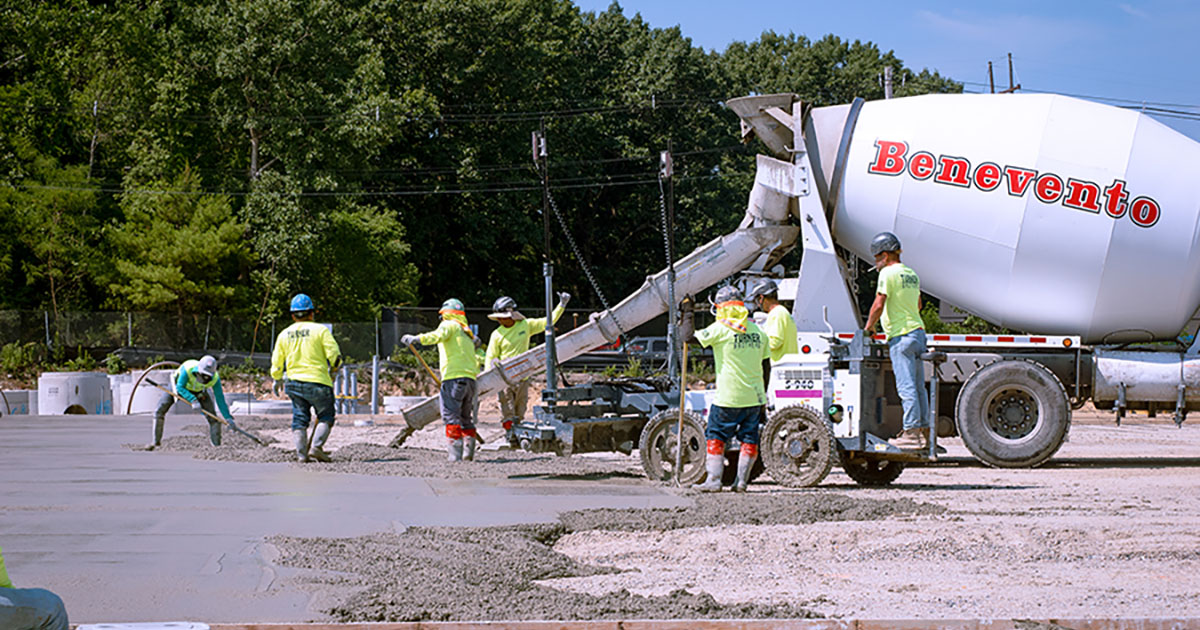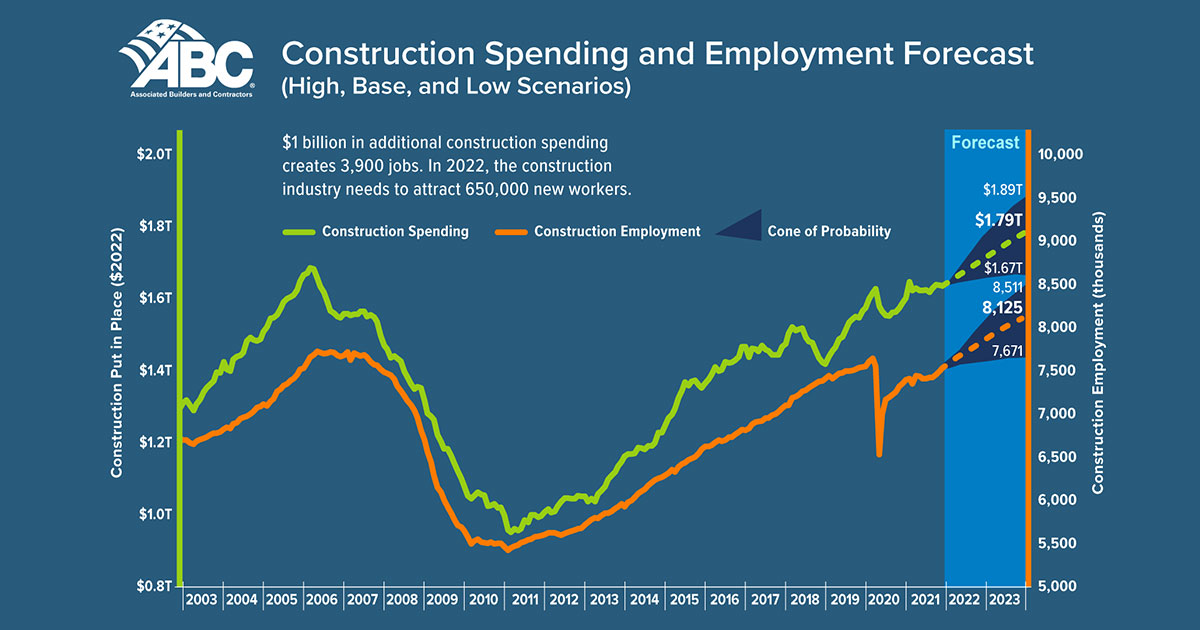
Facing a Workforce Shortage: What Construction Companies Can Do in 2023 to Attract More Employees
In 2022, the construction industry faced a projected shortage of 650,000 workers to meet growing demand. As reported by the Associated Builders and Contractors (ABC), this shortage was driven by infrastructure projects funded by the Infrastructure Investment and Jobs Act, alongside other factors like aging workers and competition from other industries. Two years later, in 2023, the problem remains highly relevant. The construction industry continues to struggle with labor shortages, exacerbating the difficulty of meeting demand for new projects across the nation.

So, what can construction companies do in 2023 to attract and retain skilled workers in an increasingly competitive job market? In this article, we’ll explore the causes of the workforce shortage and outline practical strategies construction companies can use to draw in talent and build a sustainable workforce for the future.
Why the Construction Workforce Shortage is Still Relevant in 2023
The workforce shortage that was projected in 2022 hasn’t abated. According to the 2022 ABC report, several factors contributed to the labor gap:
- Aging workforce: With over 1 in 5 workers over the age of 55 and the average retirement age at 61, the construction industry has been losing experienced professionals faster than they can be replaced.
- Insufficient skilled labor: While entry-level construction jobs have grown by over 72% since 2011, skilled trades like electricians and carpenters haven’t seen similar growth. This mismatch in skill levels exacerbates the problem.
- Competition from other industries: Many workers have been enticed by opportunities in other sectors, making it harder for construction companies to attract and retain talent.
Fast forward to 2023, and the workforce shortage remains critical, with nearly 590,000 workers still needed on top of normal hiring. The industry’s aging workforce, combined with rising construction demand due to ongoing infrastructure projects, has only deepened the gap between supply and demand for skilled workers.
Strategies to Attract More Employees in 2023
In a tight labor market, construction companies must take proactive steps to attract and retain employees. Here are some strategies that can make a difference:
1. Competitive Wages and Benefits
To attract talent, construction companies must offer competitive wages and comprehensive benefits. According to ABC’s analysis, the construction industry offers competitive pay, but companies need to ensure their wage structures keep pace with other industries. Additionally, benefits like health insurance, retirement plans, paid leave, and even flexible work schedules are attractive incentives for prospective employees.
2. Emphasize Career Growth Opportunities
In 2023, many workers—especially younger generations—are looking for long-term growth in their careers. Highlighting the potential for advancement in construction careers can draw in new workers. Emphasize that workers can begin as laborers or apprentices and progress to more skilled roles like electricians, carpenters, or construction managers.
Training programs are key here. Partnering with trade schools, offering paid apprenticeships, and promoting mentorship programs can demonstrate to new hires that they will have clear pathways for growth in your company.
3. Invest in Workforce Development and Training
Given the shortage of skilled workers, companies need to develop internal training programs that quickly upskill entry-level workers. ABC’s 2022 report highlighted the importance of craft and management education programs. In 2023, companies can expand these programs by offering on-the-job training and collaborating with industry organizations to access government-registered apprenticeships and certification courses.
- Apprenticeships: Apprenticeships offer hands-on experience, ensuring workers develop the specialized skills needed in construction while earning a wage. Expanding access to these programs can help bridge the skills gap.
- Cross-training: Encourage multi-skill development by training employees across different trades, increasing their versatility and value within the company.
4. Target Younger Workers
The construction industry is facing a demographic challenge: the number of workers aged 25-54 has fallen by 8% over the past decade. To counteract this trend, construction companies must appeal to younger workers by showing them that construction careers offer stability, growth, and financial rewards.
Strategies to attract younger talent include:
- Outreach to schools: Partner with high schools, trade schools, and community colleges to introduce students to construction careers through internships, job fairs, and site visits.
- Digital recruitment: Younger generations are more likely to find jobs online. Leveraging social media, job boards, and other digital platforms can help connect companies with tech-savvy workers who may not have considered construction.
- Highlight tech innovation: Emphasize how technology is reshaping the construction industry. Many younger workers are drawn to industries with advanced technology. Showcasing the use of drones, 3D modeling, and advanced machinery in construction can make the industry more appealing.
5. Improve Workplace Culture
Workplace culture has become a crucial factor in attracting and retaining employees. To make your company more appealing, create a positive and inclusive work environment where employees feel valued. Offer opportunities for workers to provide feedback, recognize achievements regularly, and foster team-building initiatives that create camaraderie among crews.
Diversity and inclusion initiatives are also important. Construction has traditionally struggled with diversity, but by fostering an inclusive culture that encourages the hiring of women, minorities, and veterans, companies can expand their talent pool.
Retaining Skilled Workers in 2023
Attracting workers is only half the battle—retaining skilled employees is just as critical. Here are some strategies to help companies keep their top talent:
- Offer Continued Education: Provide ongoing training opportunities for employees to improve their skills or move into management roles. Workers who feel they are continually developing are more likely to stay with a company long-term.
- Foster a Safe Work Environment: Safety remains a top priority in construction. By ensuring that job sites are secure and providing regular safety training, companies demonstrate their commitment to their workers’ well-being.
- Performance-Based Incentives: Introduce bonuses or other performance-based incentives to reward workers who demonstrate excellence, stay with the company for a certain period, or meet key project milestones.
Preparing for the Future Workforce
The construction industry’s workforce shortage isn’t going away anytime soon. As demand for skilled labor continues to grow, particularly due to infrastructure investments, construction companies must adapt to attract and retain employees in 2023. By offering competitive wages, investing in workforce development, targeting younger workers, and fostering a positive work culture, construction companies can not only meet today’s workforce challenges but also build a more sustainable labor force for the future.

